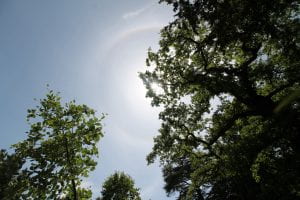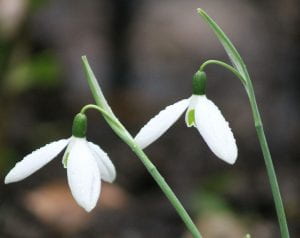By Andy Winfield
Usually after a year in the Garden, in the period of the shortest day, we take stock of the year gone, the successes and the things that didn’t work so well; then we plan for the year ahead, events and courses that we can put on, what projects will be undertaken and completed in the year to come. Midwinter is a steppingstone that we use to elegantly hop from one year to the next, but this year it seems more significant. None of us have experienced a year like this before, everyone has been affected in some way and the Botanic Garden is no different.

No events, few visitors, and our volunteers stood down for much of the year; this year’s reflecting is more poignant that in previous years. Planning has happened week by week rather than a year ahead. The Garden was empty of people but flourished after the wettest winter and driest May on record; it seemed that as soon as lockdown was announced, the sun came out and stayed out until measures were relaxed. People took to the outdoors for their daily exercise and the usually shy wildlife became bolder without humans around taking up space. Musicians played and singers sang from their rooftops, applause rang out on Thursdays for medics and care workers on the frontline of the unknown, veg was grown in back gardens and window boxes, and the Botanic Garden had a handful of staff watering and doing what we could to control the newly liberated weed populations.

We tried to communicate what was happening in the Garden through our social media channels and regular articles to our members. One of my favourite examples of this was a stroll around the Garden with Steven Falk, expert in pollinators and the author of the first field book of British bees. I had no idea how many species there were working away in the Botanic Garden; all shapes and sizes with magnificent names, such as batman hoverfly. If I ever achieve rock stardom, I think I’ll call myself Batman Hoverfly. You can see the video we made here.

It feels like ten years have gone by since January rather twelve months, but the certainty of spring, summer, autumn and winter and the beauty of each seasonal signpost was there to anchor us through the uneasiness. Reflecting on this year in the Garden has been very different, the bluebells were more stunning and the autumn colour extra vivid; these gifts we receive every year from the landscape around us and wildlife flitting amongst it were more valuable.

We’re now around the shortest day and there are still gifts to be received from nature; it is dark and cold and wet, but today I caught the scent of a winter honeysuckle and loitered around the citrus smell while a robin sung nearby. Snowdrops and witch hazel will flower soon, the first seasonal signposts after midwinter that tell us we’re heading in the right direction for spring; keep going and follow the hellebores and crocus to February, the daffodils and magnolia to March and then spring will be straight ahead of you, the days longer, the sun warmer, and hopefully a step closer to normality.
From all of us here at the Garden, stay safe and well, have a happy and hopeful break, and we look forward to welcoming you to the Garden in 2021.


The ability to visualise is a great human gift, which I’m sure, like so many others, develops with practice. I know The Garden well so, prompted by your reflections Andy, can take myself on a virtual tour, right the way round. It’s looking great, so thank you for unlocking the gates and inviting me in to hone my mind’s eye!